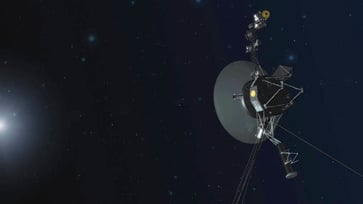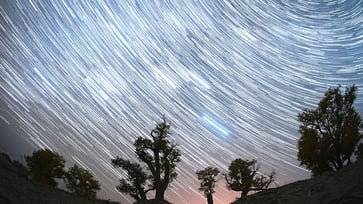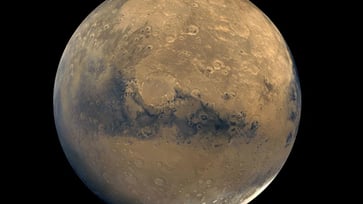The Starliner spacecraft, which has faced issues, returns to Earth without a crew.
The Starliner descended into New Mexico's White Sands Missile Range, touching down right before midnight.

NASA's Starliner spacecraft landed on Earth early Saturday morning, leaving two test pilots in space until next year due to concerns over their return.
Six hours after departing from the International Space Station, Starliner descended into New Mexico's White Sands Missile Range and touched down at 12:01 a.m. ET.
Starliner's safe return has made us proud of the work our team put into the flight test, said Ken Bowersox, associate administrator of Space Operations Mission Directorate at NASA Headquarters in Washington.
"NASA and Boeing learned a great deal about Starliner in the most extreme environment possible, even though it was necessary to return the spacecraft uncrewed. NASA is excited to continue working with the Boeing team to certify Starliner for crew rotation missions to the space station."

The return of Butch Wilmore and Suni Williams was uncertain for several months as engineers worked to determine the cause of the spacecraft's thruster failures and helium leaks, which occurred following the June launch of Boeing's long-awaited crew debut.
NASA rejected Boeing's claim that Starliner was safe for crew return and opted for SpaceX to bring them back to Earth. The SpaceX spacecraft launch is scheduled for the end of this month, so the crew will stay in space until February.
Starliner's return to Earth was delayed due to thruster issues and helium loss, prompting NASA to deem it too risky for Wilmore and Williams to fly back on the spacecraft.
The fully automated capsule, equipped with blue spacesuits and some old station gear, departed after receiving new software updates.
The spacecraft's crew completed a series of delays and setbacks during their demo for Starliner.
NASA hired Boeing and SpaceX for orbital taxi service after the retirement of space shuttles more than a decade ago. However, Boeing faced numerous problems during its first test flight without a crew in 2019, prompting a need for a do-over three years later. The cost of repairs for the issues revealed in the do-over was over $1 billion.

NASA's Dragon capsule will embark on its 10th crew ferry flight with SpaceX this month, carrying only two astronauts due to the need for two seats to bring Wilmore and Williams back home.
Despite being launched from Cape Canaveral, Florida in early June, Starliner's propulsion system was leaking helium. Four more leaks were discovered after liftoff, and five thrusters failed. While four of the failed thrusters were recovered, NASA had concerns about the possibility of more malfunctions causing issues with the capsule's descent from orbit.
NASA doubted Boeing's thruster tests and assigned SpaceX the task of bringing the astronauts back.
Engineers suspect that the thrusters become hotter with each firing, causing protective seals to expand and block the flow of propellant. As a result, none of the parts can be examined because the section containing the thrusters was discarded before reentry.

Starliner will be moved back to NASA's Kennedy Space Center.
"Mark Nappi, vice president and program manager of Boeing's Commercial Crew Program, recognized the efforts of the Starliner teams in ensuring a successful and safe undocking, deorbit, re-entry, and landing. He stated that they will review the data and determine the next steps for the program."
Earlier this week, NASA's commercial crew program manager Steve Stich stated that the space agency still desires to have two U.S. companies transporting astronauts into space. NASA hopes that SpaceX and Boeing can alternate launching crews until the space station is abandoned in 2030, followed by its fiery reentry.
"NASA's Commercial Crew Program manager, Steve Stich, expressed excitement about the safe return of Starliner. This test flight was crucial in preparing for future missions on the Starliner system. Stich commended the entire team for their hard work and dedication over the past three months."
The Associated Press contributed to this report.
science
You might also like
- Lunar modules from the first two moon landings have been captured in stunning detail by Orbiter photos, more than 50 years after the historic missions.
- Discovery of a remarkable mastodon jaw in a New York homeowner's backyard
- NASA resumes communication with Interstellar Voyager 1 after pause.
- In 2055, the asteroid that was once referred to as Earth's "mini moon" will make a return visit.
- A new species of sea slug that resides in the ocean's 'midnight zone' has been discovered with a glowing appearance.



















